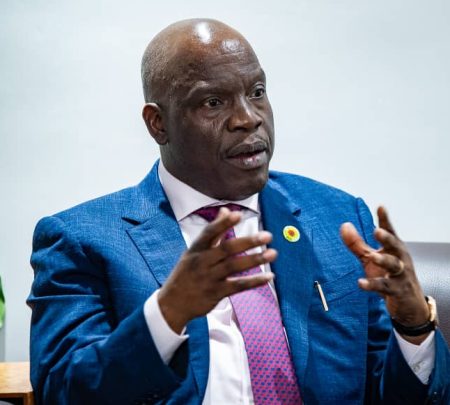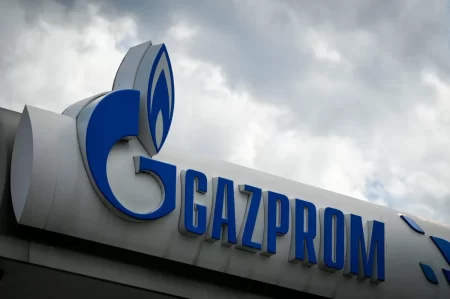 29 August 2013, Newswires – tatoil will update its resource estimate for its oil discoveries offshore eastern Canada later this fall, said Tim Dodson, executive vice president of exploration for Statoil, at a media briefing in Houston Wednesday.
29 August 2013, Newswires – tatoil will update its resource estimate for its oil discoveries offshore eastern Canada later this fall, said Tim Dodson, executive vice president of exploration for Statoil, at a media briefing in Houston Wednesday.
The company announced Tuesday that it made a third oil discovery in the Flemish Pass offshore Newfoundland. Dodson would not name a specific timeline for the update, noting that new seismic and appraisal drilling would likely be needed. The company had just retrieved a core sample from the Bay du Nord prospect. “
Based on the data we have so far, we essentially are 100 percent sure” we have made an oil discovery, Dodson added.
Statoil’s proprietary seismic techniques allowed the company to see the structure of the Bay du Nord discovery. Prior to applying its own in-house software, the Bay du Nord structure was really hard to see, not giving the company the confidence to drill. By using this software, Statoil was able to clearly map the structural and see the prospect’s potential, said Erik Finnstrom, senior vice president of exploration for Statoil in North America, during the press briefing.
Advanced seismic data acquisition, processing and interpretation techniques have enabled Statoil to pursue more complex offshore plays. The North Sea for years served as a laboratory for the development of 3D seismic technology; today, the Gulf of Mexico serves as a new lab for demonstrating seismic techniques, Dodson told reporters.
Dodson also credits Statoil’s success in the Flemish Pass offshore eastern Canada to the company’s persistence in pursuing exploration in the area when other companies opted not to move forward. The company leased up all available acreage in the Flemish Pass after deciding to follow through on the 2009 Mizzen discovery; other oil and gas companies opted not to pursue exploration in this region.
“It’s extremely important for a company to recognize when it is exposed to a highly prolific oil system,” said Dodson. “Too many people walk away from these systems, in Norway in particular.”
From Statoil’s point of view, the company could have chosen to do far less; instead, the company is expanding its efforts into the UK for the first time in many years.
“From an exploration point of view, we’re humble enough to realize not everything is done.”
In the case of Norway, initial exploration efforts have focused on easily identifiable resources, then infield exploration. Now, Statoil has moved into conceptual exploration, focused on resources that can’t be seen on seismic, but using intuition to see where an oil and gas trap may lie. While the company’s exploration strategy has been to focus on high impact wells, Statoil also continues to make a number of smaller, yet valuable oil discoveries offshore Norway.
“These discoveries haven’t just suddenly appeared,” Dodson noted. As plays mature, the oil and gas industry needs to think conceptually about where oil and gas could be generated.
Seismic technology advances will remain important for the industry as oil and gas companies go deeper and pursue more complex geology, such as salt covers in the Gulf of Mexico, offshore Brazil and Angola. In Norway, operators find they need more resolution on seismic to detect more subtle conceptual traps. However, seismic in itself is not enough with people and the creativity to interpret data.
“If you don’t have the concepts in mind, it doesn’t matter what data you have,” Dodson commented.
Strategy Change Boosts Statoil Exploration Success
Statoil’s exploration drilling success has risen in the past two years, thanks to the exploration strategy in implemented in 2009. The decision followed an evaluation of Statoil’s portfolio, and realized they weren’t drilling enough big opportunity wells and didn’t have enough access to these opportunities.
To address the issue, Statoil changed its risk profile and refocused its exploration strategy towards entering future core areas early and at scale and focusing on play openers, and drilling high-impact wells of 250 million barrels of oil equivalent (MMboe) gross or more than 100 MMboe net. As part of its strategy, the company has two core exploration areas, the Gulf of Mexico and Norway, and five emerging exploration areas: Angola, East Africa, Brazil, Eastern Canada and the Caspian.
A portfolio balanced between frontier and proven exploration assets remains key, however, with a portfolio of only high-risk, high-impact wells “a strategy for failure”, Dodson noted.
Since the end of July, the company has acquired 5,423 square miles (14,046 square kilometers) of new exploration acreage. The company plans to drill at least 40 wells and spend $3.5 billion on exploration this year, Dodson said. The company is well-positioned in world’s exploration hot spots, including the Gulf of Mexico, offshore Brazil, and East Africa. Statoil has had success securing additional exploration acreage in lease sales in 2012 and 2013 in Brazil, the U.S. Gulf of Mexico and Norway, and has also picked up four exploration blocks offshore southern Australia.
For 2013, the company plans to drill high-impact wells that are play openers in the Gulf of Mexico, Indonesia, East Africa and Canada, and plans several high-impact, high value wells offshore Norway. Statoil has secured all drilling rigs for its 2013 exploration program. The company currently is appraising Logan, its first ultra-deepwater discovery in the Gulf of Mexico, and is participating in the BHP Billiton-operated Sake exploration well in the U.S. Gulf.
The Gulf of Mexico comprises the largest portion of Statoil’s threefold exploration focus in North America. The company also is pursuing U.S. onshore unconventional plays; its strategy of entering plays early and at scale proves somewhat more difficult, as many of these plays have been entered at some point in time.
The company this year has signed an offshore joint venture agreement with Rosneft OAO, swapped assets with Cairn Energy on the Norwegian Continental Shelf for UK Continental Shelf assets. Statoil also farmed down its interest in its Mozambique acreage and signed a memorandum of understanding with the Azeri National oil Company for two high-impact wells in Azerbaijan. Earlier this month, Austria’s OMV said it would pay $2.7 billion for several Statoil North Sea assets.
So far this year, Statoil has proven mean resource volumes of approximately 550 MMboe – with potentially more to come – making Statoil for the third year in a row the top exploration and production company globally in terms of conventional discovered oil and gas volumes.
Dodson attributed the company’s ranking in part to its third high-impact discovery in Tanzania. Natural gas comprises more than half of the conventional resources discovered by Statoil this year. Dodson noted that the Atlantic Margin, Gulf of Mexico and Brazil continue to be site of most oil discoveries being made.
Since 2011, Statoil has proven 3.2 billion barrels of oil equivalent, which includes major discoveries such as Johan Sverdrup offshore Norway and discoveries in Tanzania and offshore Brazil. The company had risked resources of approximately 6 billion boe in 2012 and 2013. The company tested 900 MMboe of resources in 2012 and discovered 1.5 billion boe last year. Since 2012, the company has added new prospects of 1.0 MMboe.
By comparison, the global oil and gas industry at large has only discovered 5 billion boe of conventional oil and gas resources, including two billion barrels of oil, in 2013. Dodson noted that the industry has been struggling to replace hydrocarbons since the mid-1980s as new, untapped oil and gas resources become harder to find. Since the mid-1980s, the oil and gas industry has not replaced the amount of oil used in a single year with new resources. As a result, the amount of oil discovered is not keeping pace with 30 billion barrels of oil consumed each year globally.
The company’s health, safety and environment (HSE) performance has also has improved in recent years, with the number of serious incidents and near-misses on the decline since 2008. The Statoil group had an incident rate of 0.8 per million hours worked in 2013, and Statoil’s exploration group had an incident rate of 0.6 per million hours worked this year.
Dodson attributed the company’s successful HSE track record – which gives the company license to operate in varied and challenging environments worldwide – to consistently making safety the top priority on a day-by-day basis.
“There is not just one factor nor a silver bullet,” Dodson commented. “It’s just relentlessly pursuing safety on a daily basis, because you never know if the next accident is around the corner or where it will come from.”
– Karen Boman, Rigzone



